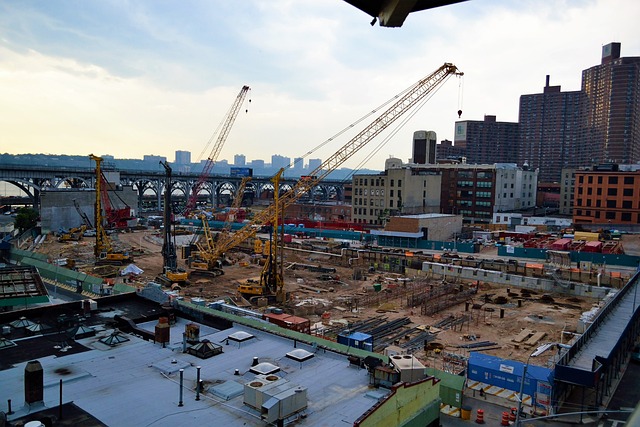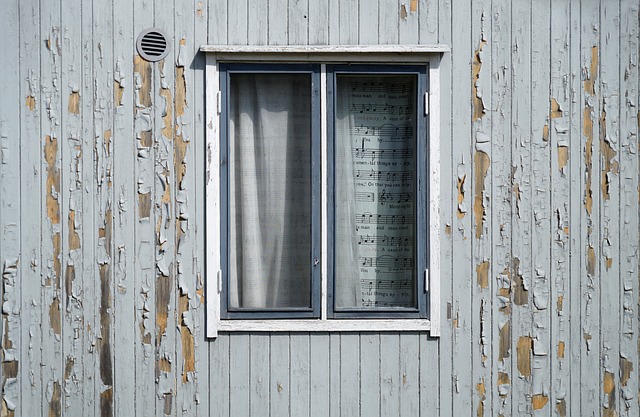Waterproofing is crucial for protecting concrete foundations in homes, especially in humid areas, preventing structural damage and mold growth. Common methods include membranes, coatings, and drainage systems. Leaks often result from construction flaws or environmental factors like soil movement and root intrusion. Regular inspection, proactive maintenance, and high-quality materials ensure long-term protection. Homeowners should monitor for moisture signs and maintain effective waterproofing to avoid costly repairs. Case studies demonstrate the success of modern techniques in repairing historic homes and increasing property value through comprehensive foundation repair and waterproofing.
“Concrete Foundation Waterproofing is a crucial aspect of residential foundation repair, ensuring longevity and structural integrity. This comprehensive guide delves into the essential techniques for protecting your home’s base from moisture intrusion. We explore the common causes of concrete leaks, various waterproofing materials and methods, and best practices for installation.
From understanding the basics to successful case studies, this article equips homeowners with knowledge to navigate the complex world of residential foundation repair, ultimately safeguarding their investment.”
Understanding Concrete Foundation Waterproofing: A Basic Guide

Waterproofing a concrete foundation is a vital step in ensuring the longevity and integrity of any residential structure. It involves creating a protective barrier against moisture intrusion, which can cause significant damage over time. This process is particularly crucial for homes built on soil prone to water logging or those located in regions with high humidity levels.
A basic guide to understanding this concept reveals several key aspects. First, it entails inspecting the foundation for any cracks or imperfections that could allow water seepage. Once identified, these issues need to be addressed through repairs or sealing. Common methods include applying waterproof membranes, using specialized coatings, or installing drainage systems to divert water away from the foundation. By combining these techniques, a robust defense against moisture damage can be established, thereby safeguarding the structural integrity of the residential foundation repair.
The Significance of Waterproofing in Residential Foundation Repair

Waterproofing is an essential aspect of residential foundation repair, offering protection against one of the most common and costly issues homeowners face. The impact of water intrusion on a home’s foundation can be severe, leading to structural damage, mold growth, and even reduced property value. By implementing effective waterproofing measures, homeowners can mitigate these risks and extend the lifespan of their homes.
In residential foundation repair, waterproofing solutions provide a defensive barrier against moisture, preventing it from seeping into cracks, joints, and other vulnerabilities in the concrete structure. This is particularly crucial for homes built in regions with high humidity or frequent rainfall, where water pressure can exert significant force on the foundation walls. Modern waterproofing technologies offer durable, long-lasting protection, ensuring that homes remain dry and safe for years to come.
Common Causes of Concrete Foundation Leaks

Concrete foundation leaks are a common issue that can lead to serious structural damage and costly repairs, especially in residential areas. Understanding the root causes is essential for homeowners seeking effective solutions like Residential Foundation Repair. One of the primary reasons behind these leaks is inadequate waterproofing during the initial construction stage. This can result from using low-quality materials or failing to apply a robust waterproof membrane over the concrete surface. Over time, these weaknesses allow water to penetrate the substrate, leading to cracks and seepage.
Another significant cause is ground movement, particularly in areas with expansive clay soils. As the soil expands due to moisture absorption, it exerts pressure on the foundation walls, causing cracks to form and allowing water ingress. Tree roots also play a role; their growth can intrude into the concrete, creating pathways for water to enter. Lastly, outdated or damaged drainage systems around the property can exacerbate these issues by not efficiently directing rainwater away from the foundation, increasing the likelihood of leaks and subsequent Residential Foundation Repair needs.
Techniques and Materials Used for Waterproofing

Waterproofing a concrete foundation is a critical step in ensuring the structural integrity and longevity of any building, be it commercial or residential. The techniques and materials employed in this process have evolved over time, offering more effective solutions for various climates and substrate conditions. One of the most common methods involves applying a waterproof membrane, often made from high-density polyethene (HDPE) or bitumen, directly onto the concrete surface. These membranes create a barrier that prevents water penetration, effectively shielding the foundation from moisture-related damage.
Advanced technologies have introduced innovative solutions like liquid waterproofing, where specialized chemicals are injected into the concrete to fill microscopic pores and capillaries, creating an impenetrable shield. For areas prone to extreme weather conditions or high ground water levels, a combination of these techniques may be employed to provide maximum protection. Residential Foundation Repair professionals often recommend regular inspection and maintenance of waterproof systems to ensure their continued effectiveness over time.
Best Practices for Implementing Effective Waterproofing Systems

Implementing effective waterproofing systems for concrete foundations is a critical step in preventing water intrusion and ensuring the longevity of residential structures. Best practices involve starting with a thorough inspection to identify potential entry points and existing vulnerabilities. Addressing these issues proactively is key to successful waterproofing. One effective method is applying a high-quality waterproof membrane, carefully installed to seal all joints and cracks. This barrier should be reinforced with appropriate flashings around windows, doors, and pipes to create an impenetrable defense against moisture.
Regular maintenance plays a significant role in sustaining the effectiveness of these systems. It includes periodic inspections to verify the integrity of the membrane and promptly repairing any damage or gaps that may develop over time. Additionally, ensuring proper drainage around the foundation by sloping the ground away from the structure helps prevent water accumulation, reducing the risk of breaches. For residential foundation repair, combining these best practices offers a robust defense against groundwater intrusion, safeguarding homes from costly damages caused by moisture-related issues.
Maintenance and Monitoring: Ensuring Longevity of Waterproofed Foundations

Regular maintenance and monitoring are key to ensuring the longevity of waterproofed concrete foundations, a vital aspect of any robust residential foundation repair strategy. Homeowners should inspect their basements or crawl spaces periodically for any signs of moisture intrusion, such as mold growth, water stains, or musty odours. Addressing these issues promptly prevents further damage and ensures the effectiveness of the waterproofing system.
In addition to visual inspections, implementing a monitoring system that tracks humidity levels and water pressure can provide valuable data. This allows for proactive measures like sealing cracks or repairing breached membranes before water seeps into the foundation, negating the need for extensive residential foundation repair down the line.
Case Studies: Success Stories in Residential Foundation Repair

In the realm of residential construction, a solid and secure foundation is non-negotiable. This is where case studies come into play, offering tangible examples of successful residential foundation repair projects. These stories serve as a testament to the effectiveness of modern waterproofing techniques in mitigating common issues like seepage and cracks. For instance, consider a recent case where a historic home, built on an unstabilized soil base, experienced chronic water damage due to shifting foundations. Through extensive research and implementation of advanced waterproofing solutions, including the use of specialized membranes and robust sealing agents, the repair team not only stopped further damage but also enhanced the structural integrity of the property.
Another compelling example involves a suburban family home that faced a more intricate challenge—a complex network of cracks and moisture intrusion along the basement walls. The solution required a multi-step approach combining chemical injections to fill micro-cracks, application of a robust barrier coating, and strategic drainage modifications around the perimeter. The result was a dry, healthy basement environment that increased the property’s overall value and provided peace of mind for the homeowners. These success stories highlight the transformative potential of professional residential foundation repair, demonstrating how modern waterproofing technologies can revitalize even the most troubled structures.
